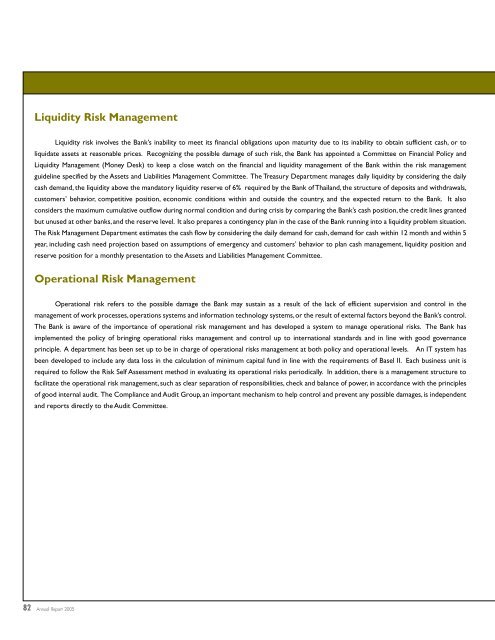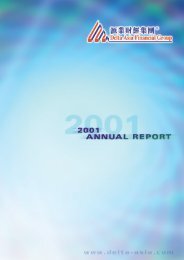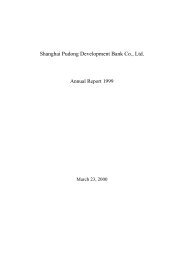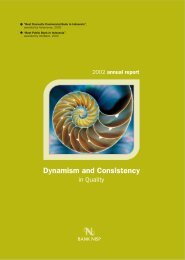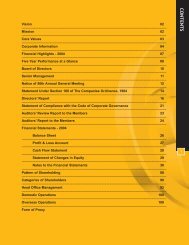2005 - Asianbanks.net
2005 - Asianbanks.net
2005 - Asianbanks.net
You also want an ePaper? Increase the reach of your titles
YUMPU automatically turns print PDFs into web optimized ePapers that Google loves.
Liquidity Risk Management<br />
Liquidity risk involves the Bank’s inability to meet its financial obligations upon maturity due to its inability to obtain sufficient cash, or to<br />
liquidate assets at reasonable prices. Recognizing the possible damage of such risk, the Bank has appointed a Committee on Financial Policy and<br />
Liquidity Management (Money Desk) to keep a close watch on the financial and liquidity management of the Bank within the risk management<br />
guideline specified by the Assets and Liabilities Management Committee. The Treasury Department manages daily liquidity by considering the daily<br />
cash demand, the liquidity above the mandatory liquidity reserve of 6% required by the Bank of Thailand, the structure of deposits and withdrawals,<br />
customers’ behavior, competitive position, economic conditions within and outside the country, and the expected return to the Bank. It also<br />
considers the maximum cumulative outflow during normal condition and during crisis by comparing the Bank’s cash position, the credit lines granted<br />
but unused at other banks, and the reserve level. It also prepares a contingency plan in the case of the Bank running into a liquidity problem situation.<br />
The Risk Management Department estimates the cash flow by considering the daily demand for cash, demand for cash within 12 month and within 5<br />
year, including cash need projection based on assumptions of emergency and customers’ behavior to plan cash management, liquidity position and<br />
reserve position for a monthly presentation to the Assets and Liabilities Management Committee.<br />
Operational Risk Management<br />
Operational risk refers to the possible damage the Bank may sustain as a result of the lack of efficient supervision and control in the<br />
management of work processes, operations systems and information technology systems, or the result of external factors beyond the Bank’s control.<br />
The Bank is aware of the importance of operational risk management and has developed a system to manage operational risks. The Bank has<br />
implemented the policy of bringing operational risks management and control up to international standards and in line with good governance<br />
principle. A department has been set up to be in charge of operational risks management at both policy and operational levels. An IT system has<br />
been developed to include any data loss in the calculation of minimum capital fund in line with the requirements of Basel II. Each business unit is<br />
required to follow the Risk Self Assessment method in evaluating its operational risks periodically. In addition, there is a management structure to<br />
facilitate the operational risk management, such as clear separation of responsibilities, check and balance of power, in accordance with the principles<br />
of good internal audit. The Compliance and Audit Group, an important mechanism to help control and prevent any possible damages, is independent<br />
and reports directly to the Audit Committee.<br />
82


